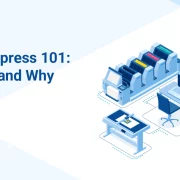In the self-paced learning paradigm, the learner selects their chosen learning periods and progresses through their courses at their own pace. It isn’t organized.
Q: What is self-paced learning?
A: This flexible educational approach allows learners to study at their own speed and convenience. Unlike traditional instructor-led training with fixed schedules, this method enables individuals to access course materials anytime, anywhere, progressing based on their understanding and availability.
Q: How does it work?
A: Learners are provided with pre-recorded lectures, digital reading materials, quizzes, and interactive exercises. They can start, pause, and resume lessons as needed, ensuring flexibility. Many courses use Learning Management Systems (LMS) to track progress and provide automated feedback.
Q: What are the benefits?
A: Flexibility & Convenience: Learn at any time, from anywhere.
- Personalized Learning Speed: Progress according to individual understanding.
- Better Retention: Revisit content as needed for improved comprehension.
- Cost-Effective: Eliminates travel and scheduling constraints.
- Scalability: Ideal for individuals and organizations training multiple learners.
Q: Who benefits from this approach?
A: It is ideal for:
- Students and professionals looking to enhance skills without disrupting their schedules.
- Corporate employees undergoing compliance training, upskilling, or certification programs.
- Organizations training large teams efficiently.
Q: What types of content are used?
A: Common formats include video lectures, eBooks, interactive modules, simulations, discussion forums, and quizzes.
Q: Is it effective?
A: Yes! Studies show that personalized learning experiences improve retention and engagement. With this method, individuals take ownership of their progress, leading to better learning outcomes.
This modern learning style empowers individuals with flexibility, control, and a personalized learning journey. Learners can access materials anytime, progress at their own pace, and revisit content as needed, ensuring better comprehension and retention. It eliminates rigid schedules, making it ideal for students, professionals, and corporate employees seeking skill development without disrupting their routines. With interactive content like videos, eBooks, quizzes, and simulations, this approach enhances engagement and knowledge retention. Organizations benefit by efficiently training large teams while reducing costs. By offering a learner-centric experience, this method ensures higher success rates and long-term knowledge retention in various industries.




